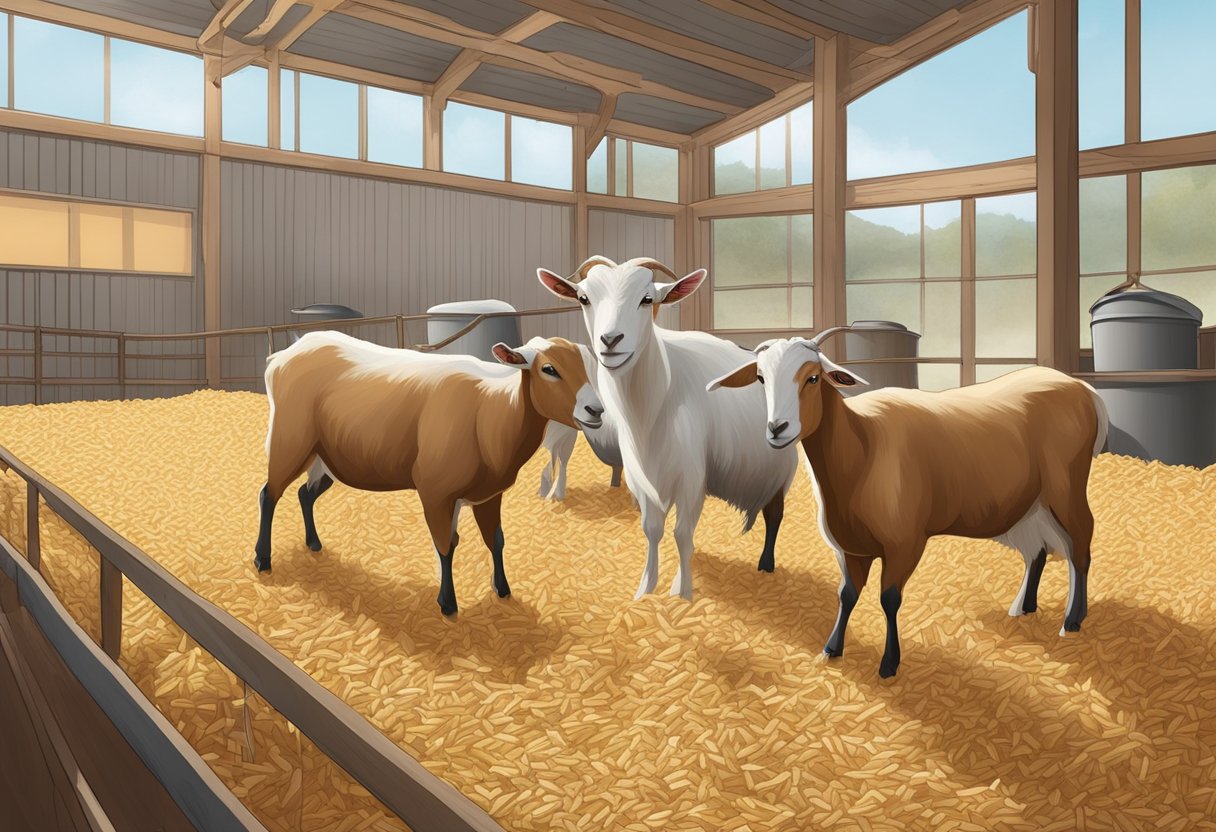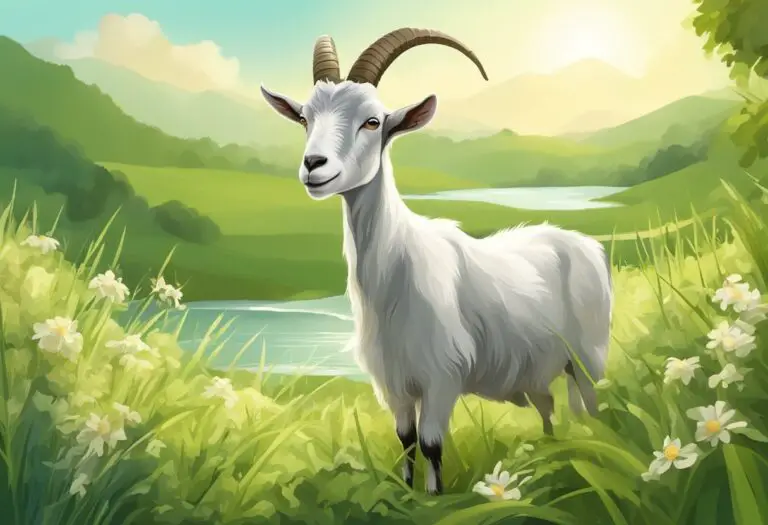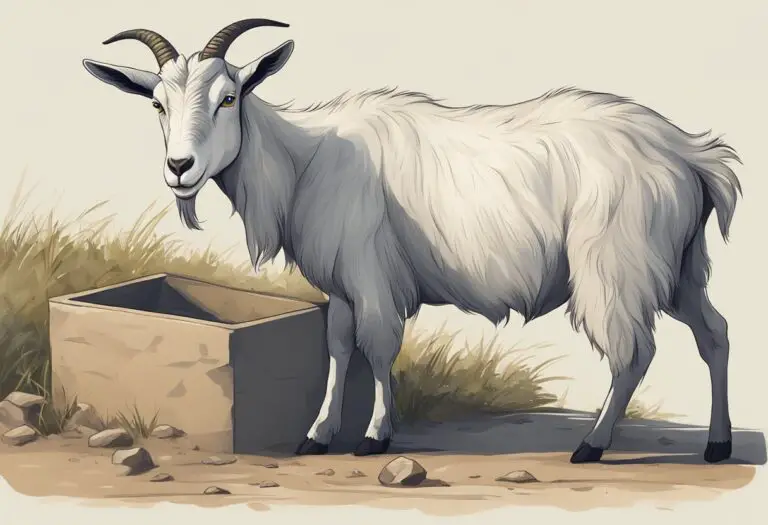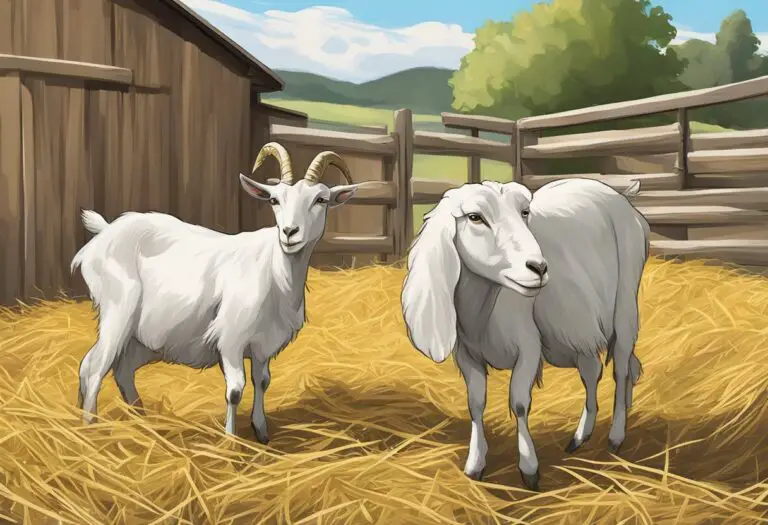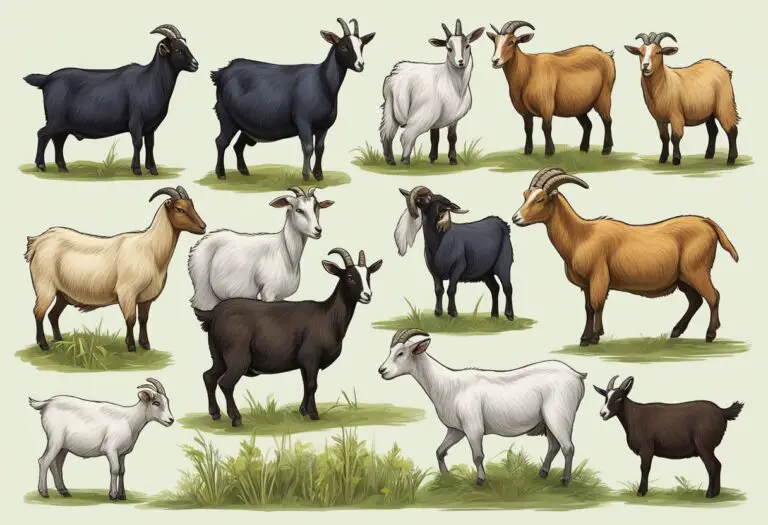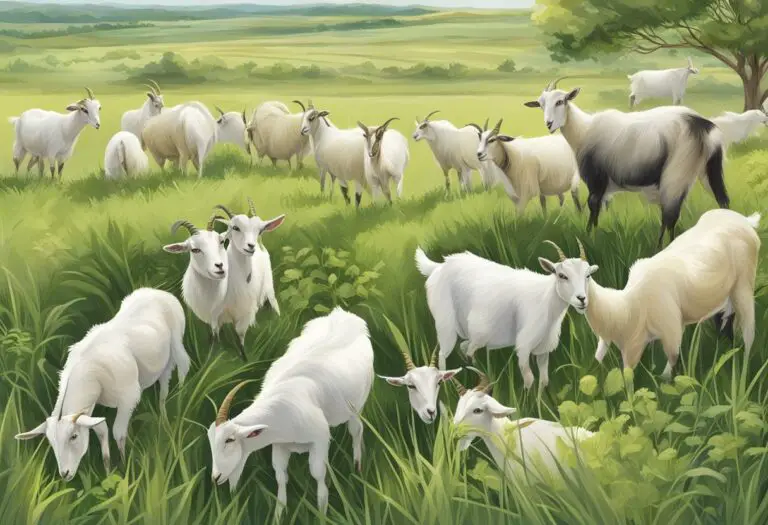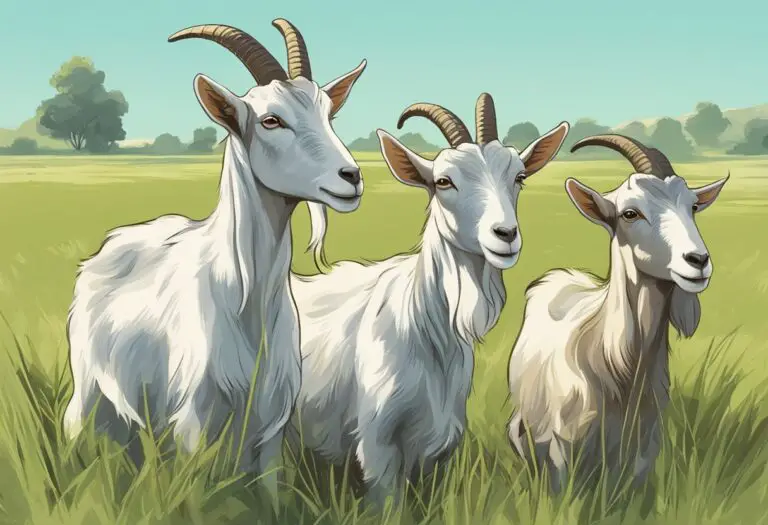What is the Best Feed for Meat Goats: A Guide to Optimal Nutrition
Meat goats are an important source of protein for many people around the world. As such, it is important to ensure that they are fed a proper diet to promote their growth and health. However, with so many different types of feed available, it can be difficult to determine which one is the best for meat goats.
One important factor to consider when choosing a feed for meat goats is their nutritional requirements. Meat goats require a diet that is high in protein, energy, and fiber to support their growth and development. Additionally, they require a variety of vitamins and minerals to maintain their health and prevent disease.
Another factor to consider is the availability and cost of different types of feed. While some feeds may be ideal for meat goats, they may not be readily available or affordable in certain regions. As such, it is important to choose a feed that is both suitable for meat goats and accessible to the farmer.
Understanding Meat Goat Nutrition

Nutritional Requirements
Meat goats have specific nutritional requirements that must be met to ensure optimal growth and health. These requirements vary depending on the age, weight, and stage of production of the goat. The main nutrients required by meat goats are energy, protein, minerals, and vitamins.
Energy is the most important nutrient for meat goats as it provides the fuel for growth, maintenance, and reproduction. Protein is essential for muscle development and repair. Minerals such as calcium, phosphorus, and magnesium are necessary for bone growth and maintenance, while vitamins are important for various metabolic functions.
Importance of a Balanced Diet
A balanced diet is crucial for meat goats to meet their nutritional requirements and maintain good health. A diet that is deficient in any of the essential nutrients can lead to health problems and reduced productivity. For example, a lack of energy can result in poor growth and weight gain, while a deficiency in minerals can cause skeletal deformities.
To ensure a balanced diet, meat goat producers should provide their goats with a combination of high-quality forages, grains, and supplements. Forages such as hay and pasture can provide energy, protein, and minerals, while grains such as corn and oats can provide additional energy. Supplements such as mineral blocks and vitamin mixes can help ensure that the goats receive all the necessary nutrients.
In summary, understanding the nutritional requirements of meat goats is essential for their optimal growth and health. Providing a balanced diet that meets these requirements is crucial for meat goat producers to achieve their production goals and ensure the welfare of their animals.
Types of Feed for Meat Goats

Meat goats require a balanced diet to grow and produce meat efficiently. A proper diet should consist of a combination of forage, concentrate, and supplements. Here are the three types of feed that are commonly used for meat goats:
Forage and Pasture
Forage and pasture are the primary sources of nutrition for meat goats. They provide the necessary fiber, vitamins, and minerals that goats need for healthy digestion and growth. Common forages for meat goats include Bermuda grass, fescue, clover, and alfalfa. Meat goats require high-quality forage and pasture to achieve optimal growth and production.
Concentrates
Concentrates are high-energy feeds that are used to supplement forage and pasture. They are fed in small amounts and are rich in protein, carbohydrates, and fats. Common concentrates for meat goats include corn, soybean meal, oats, and barley. Concentrates should be fed in moderation to prevent overfeeding and digestive problems.
Supplements
Supplements are added to the diet to provide additional nutrients that may be lacking in forage and concentrate. They include minerals, vitamins, and protein sources. Common supplements for meat goats include salt, calcium, phosphorus, and vitamin E. Supplements should be provided according to the specific needs of the goats and the quality of the forage and concentrate.
In conclusion, a balanced diet consisting of forage, concentrate, and supplements is essential for the growth and production of meat goats. It is important to provide high-quality forage and pasture, feed concentrates in moderation, and supplement the diet with necessary nutrients.
Feeding Strategies for Optimal Growth

Life Stage Feeding
The feeding requirements of meat goats vary depending on their life stage. For instance, pregnant and lactating does require more nutrients than growing kids or bucks. During the early stages of life, kids rely on their mothers’ milk for nutrition. After weaning, they require a diet that is high in protein and energy to support their rapid growth.
For pregnant does, it is essential to provide them with proper nutrition to support the growth of their kids. In the last trimester of pregnancy, does require additional energy and protein to support the growth of their fetuses. After kidding, does require a diet that is high in energy and protein to support milk production.
Weight Gain and Feed Conversion
The goal of feeding meat goats is to achieve optimal weight gain and feed conversion. A diet that is high in protein and energy is essential for achieving this goal. Meat goats require a diet that is balanced in carbohydrates, fats, minerals, and vitamins.
Feed conversion is the amount of feed that is required to produce a pound of weight gain. The feed conversion rate of meat goats varies depending on their age, breed, and sex. Generally, younger goats have a better feed conversion rate than older goats.
In conclusion, feeding strategies for optimal growth of meat goats require a balanced diet that is high in protein and energy. Proper nutrition is critical for pregnant and lactating does to support the growth of their kids. The feed conversion rate of meat goats varies depending on their age, breed, and sex.
Common Feed Ingredients and Their Benefits

Grains
Grains are a common ingredient in meat goat feed. They provide energy and are a good source of carbohydrates. Some common grains used in feed include corn, barley, and oats. Corn is a popular choice because it is high in energy and easy to digest. Barley is also a good choice because it is high in protein and fiber. Oats are a good source of energy and also contain protein and fiber.
Proteins
Proteins are essential for the growth and development of meat goats. They help to build muscle and tissue. Some common sources of protein in feed include soybean meal, cottonseed meal, and alfalfa meal. Soybean meal is a popular choice because it is high in protein and is easily digestible. Cottonseed meal is also a good choice because it is high in protein and fiber. Alfalfa meal is a good source of protein and also contains vitamins and minerals.
Fibers
Fibers are important for the digestive health of meat goats. They help to promote the growth of beneficial bacteria in the gut. Some common sources of fiber in feed include hay, straw, and beet pulp. Hay is a good source of fiber and also provides some protein and energy. Straw is a good source of fiber and is often used as a bedding material. Beet pulp is a good source of fiber and is also high in energy.
In summary, a balanced diet for meat goats should include a variety of grains, proteins, and fibers. It is important to choose high-quality ingredients and to provide a balanced diet to ensure the health and productivity of the animals.
Assessing Feed Quality

Assessing the quality of feed is an essential aspect of ensuring that meat goats receive adequate nutrition. Here are some ways to assess the quality of feed:
Forage Analysis
Forage analysis is a useful tool for evaluating the nutrient content of feed. It provides information on the protein, fiber, and mineral content of the feed. Forage analysis can be done by sending samples to a laboratory or using a handheld device that measures the nutrient content of the feed. The results of the analysis can be used to adjust the diet of the goats and ensure that they are getting the right balance of nutrients.
Feed Labels and Nutrient Content
Feed labels provide important information about the nutrient content of the feed. It is important to read the labels carefully to ensure that the feed meets the nutritional requirements of the goats. The label should indicate the protein, fiber, and mineral content of the feed. It is also important to check the ingredients list to ensure that the feed does not contain any harmful substances.
In addition to reading the label, it is important to assess the quality of the feed visually. Good quality feed should be free from mold, dust, and other contaminants. It should also be fresh and have a pleasant smell.
By assessing the quality of feed using these methods, meat goat farmers can ensure that their goats receive the necessary nutrients for optimal growth and health.
Health Considerations in Feeding

Toxic Plants and Foods
Feeding meat goats is not just about providing them with the right nutrients, but also about avoiding toxic plants and foods that can harm their health. Ingesting these toxic substances can lead to serious health issues and even death. Some common toxic plants that should be avoided include:
- Poison hemlock
- Nightshade
- Red maple leaves
- Rhododendron
- Yew
It is important to identify and remove these plants from the goat’s grazing area to prevent accidental ingestion. Additionally, certain human foods such as chocolate, avocado, and onions are also toxic to goats and should be avoided.
Disease Prevention Through Diet
A well-balanced diet is essential for maintaining the health of meat goats. A diet that is deficient in certain nutrients can lead to weakened immune systems and increased susceptibility to diseases. Ensuring that goats receive adequate amounts of protein, vitamins, and minerals is crucial for disease prevention.
Protein is important for muscle growth and repair, as well as for maintaining a healthy immune system. Good sources of protein for goats include alfalfa, clover, and soybean meal.
Vitamins and minerals are also essential for maintaining good health. Goats require vitamins A, D, and E, as well as calcium, phosphorus, and selenium. A deficiency in any of these nutrients can lead to serious health issues. Providing a mineral supplement can help ensure that goats receive adequate amounts of these essential nutrients.
In summary, avoiding toxic plants and foods and providing a well-balanced diet are important considerations for maintaining the health of meat goats. By taking these steps, goat owners can help prevent disease and ensure that their goats thrive.
Cost-Effective Feeding

Budgeting for Feed Costs
When it comes to feeding meat goats, one of the biggest factors to consider is cost. As with any livestock, feed expenses can quickly become a significant part of the overall budget. Therefore, it is essential to budget for feed costs to avoid overspending.
One way to budget for feed costs is to estimate the amount of feed needed per goat per day. This estimation can vary depending on the breed, age, and weight of the goat. Once the daily feed requirement is determined, it is easier to calculate the monthly and annual feed expenses.
Another way to save on feed costs is to buy feed in bulk. Buying in bulk can be more cost-effective than buying small quantities. However, it is essential to make sure that the feed is of good quality and has a long shelf life.
Alternative Feeding Options
Apart from traditional feed options, there are alternative feeding options that can be cost-effective for meat goats. One of these options is grazing. Grazing allows goats to feed on grass, which is a natural and cost-effective option. However, it is essential to ensure that the grazing area is free from toxic plants and other hazards.
Another alternative feeding option is hay. Hay is a good source of roughage for goats and can be stored for an extended period. However, it is essential to make sure that the hay is of good quality and free from mold and other contaminants.
In conclusion, cost-effective feeding is essential when raising meat goats. Budgeting for feed costs and exploring alternative feeding options can help reduce expenses without compromising the health and productivity of the goats.
Monitoring and Adjusting Diets

Growth Tracking
To ensure that meat goats are receiving adequate nutrition, it is important to monitor their growth regularly. This can be done by weighing them on a regular basis and keeping track of their weight gain. A healthy meat goat should gain approximately 0.2-0.4 pounds per day, depending on their age and breed.
If a meat goat is not gaining weight at the expected rate, it may be necessary to adjust their diet. This can be done by increasing the amount of feed they are receiving or by changing the type of feed they are eating. It is important to make these changes gradually to avoid causing digestive upset.
Body Condition Scoring
In addition to monitoring growth, it is also important to monitor the body condition of meat goats. Body condition scoring is a method used to assess the amount of fat on a goat’s body. A score of 1 indicates that the goat is extremely thin, while a score of 5 indicates that the goat is obese.
Meat goats should ideally have a body condition score of 3. This indicates that they have enough fat reserves to maintain their health, but are not carrying excess weight that could negatively impact their health and productivity.
If a meat goat has a body condition score that is too low, it may be necessary to increase the amount of feed they are receiving. If their body condition score is too high, it may be necessary to reduce the amount of feed they are receiving or to switch to a lower calorie feed.
By monitoring the growth and body condition of meat goats and adjusting their diets as needed, farmers can ensure that their goats are receiving the best possible nutrition for optimal health and productivity.

